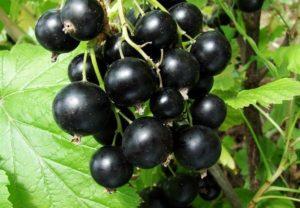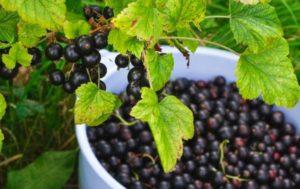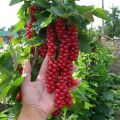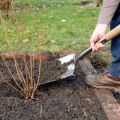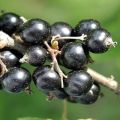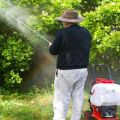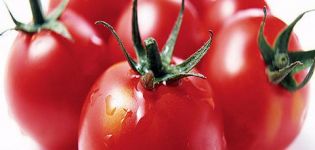How and when is it better to transplant a currant bush to a new place
There are some rules on how to transplant a currant bush to a new place. It is important to determine at what time it is best to carry out the procedure so that the root system adapts faster and the plant does not die. Pre-select and prepare the site for planting, as well as the bush itself. After planting, you need to provide the seedling with special care, which involves frequent watering, treatment from diseases and pests, and top dressing.
Why is it necessary to transplant to a new place
The need to transplant a currant bush from one place to another may arise in the following situations:
- autumn planting of a bush of the variety you like;
- for the purpose of plant rejuvenation;
- a way to get rid of disease and pests;
- shadow due to grown fruit trees;
- thinning out overgrown bushes;
- increased yields, as the land under the bush is quickly depleted.
In order for the currant bush to take root on the new land plot, it is necessary to carry out preparatory work and choose the right time.
Optimal timing
When determining in which month to transplant, first of all, weather conditions are taken into account. In the spring, the best time for work is March (from 11 to 22 March). In autumn, you can start work from September 20 and continue until mid-October.
When is it better - in autumn or spring
You can do plant transplantation both in spring and autumn. But in regions with frosty winter months, it is better to abandon the autumn transplant:
- In the spring, work is carried out before the start of sap flow. In this case, stable warm weather should be established. If the work is carried out before the sap flow begins and the buds and roots wake up, the plant will adapt faster. The shrub will not bear fruit during the transplanting season, but you can be sure that the shoots will not suffer from frost.
- An autumn transplant has many advantages. Before the onset of the first frost, a stable temperature regime of the air is maintained, which favorably affects the adaptation of the root system. In addition, many nutrients are accumulated in all parts of the plant, and the movement of sap stops. All these factors contribute to the rapid tightening of damaged areas. The shrub will bear fruit next summer.
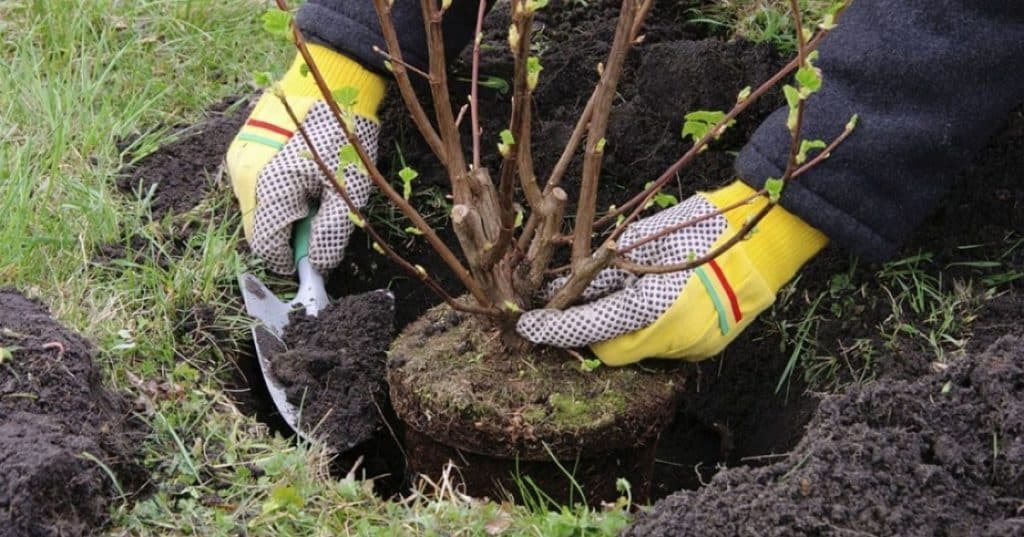
In regions with warm and temperate climates, it is preferable to replant the crop in the fall. You need to have time to plant a plant before frost at least 20 days in advance. The ideal period is mid-September.
Is it possible to transplant bushes in summer
Transplanting a currant bush in summer, especially in July, is undesirable. At this time, the chances of rooting in a new place are the lowest. The plant gives all its strength to the development of green mass and the formation of fruits.
But there are times when you can't do without a transplant (for example, selling a plot or contaminating the soil with an infection). In this case, the bush should be dug with an earthen lump. And the larger the earthen lump, the better, since the roots will not be affected too much. Immediately after transplanting, the soil is abundantly watered and mulched with humus.
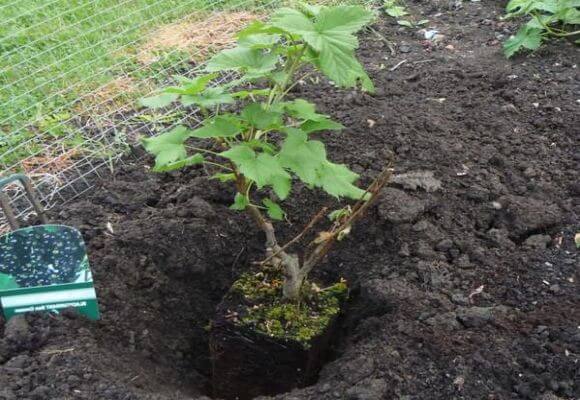
In August, it is advisable to transplant currants with cuttings. Over the summer, young shoots form around the bush, which can be planted throughout the site. Choose cuttings with a height of at least 16 cm and a diameter of 5 cm.
Preparatory stages
For the transplant to go well, you need to choose the right place, choose the right soil and prepare the planting material itself.
Transplant technology
In the case of a shrub transplant procedure in accordance with all the rules, adaptation to a new place will take place quickly, and immunity will not suffer.
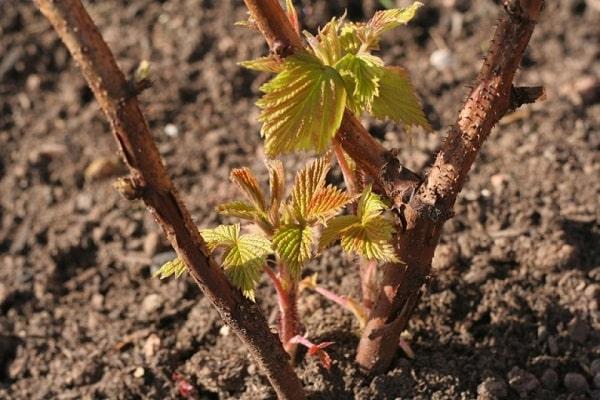
Choosing the perfect place for the bush
Growing a plant in the right place will bring little hassle, and the harvest will be of high quality and abundant. For planting fruit shrubs, choose a light, flat area, preferably from the south or southwest side. In these places, the earth warms up faster with the sun, the soil passes air well and water does not accumulate.
For currants, areas where potatoes, buckwheat, legumes, beets, and corn used to grow are well suited.
It is undesirable to plant in a place where many weeds grow or the roots of perennial plants are intertwined. You can not plant currants in a lowland where water accumulates. This unfavorable factor contributes to the development of fungal diseases and rot. Too high, too, can not be planted, since cold winds blow on a hill, and water quickly evaporates from the surface of the earth.
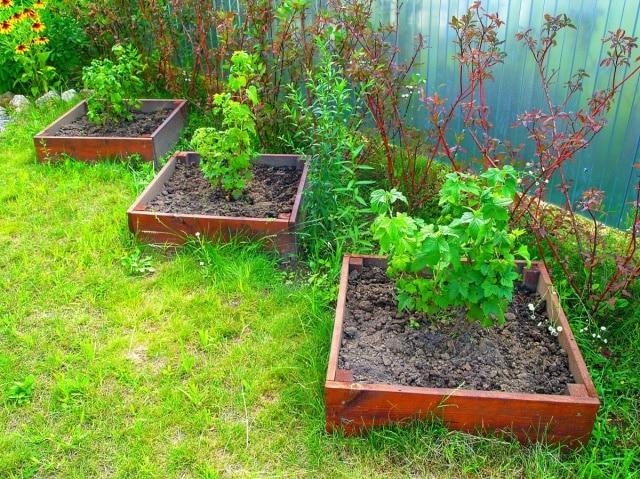
Preparing the soil and planting pit
The place chosen for transplanting is dug up to a depth of 38 cm in early spring and a complex of fertilizers is applied, consisting of compost, superphosphate and potassium chloride. Light, nutritious soil with good aeration and neutral acidity is suitable for planting currants. The ideal option is a loamy soil composition.
In August, they begin to dig the planting hole. Its depth should be approximately 42 cm, and its width - 62 cm. For tall varieties of currants, the size of the pit is made larger. The upper part of the soil removed from the pit is mixed with a small part of rotted manure, wood ash and superphosphate. The resulting fertile substrate is poured into the bottom of the pit and watered with warm water.
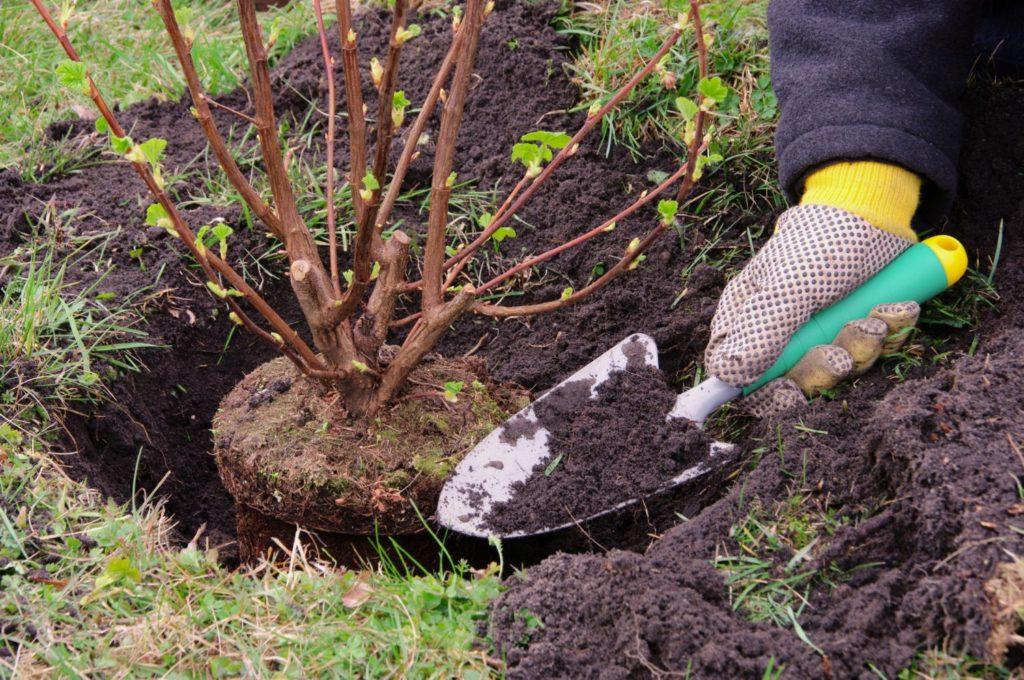
Bush preparation
Before planting, they prepare not only the soil, but also the bush itself. Preparatory work begins several weeks before transfer work. All old and damaged stems are cut out, and young shoots are shortened.
Pruning before the procedure
During transplanting, the area of the root system is significantly reduced, as a result, less nutrients will be supplied to the upper part of the shrub. Therefore, 2.5 weeks before transplanting, it is necessary to prune secondary branches that are not involved in fruiting. At the same time, the plant is rejuvenated.
Strong branches grow at the base of the shrub; already at a height of 35 cm, the fruiting zone begins. Weak branching is noted here, the shoots are short, but flower buds are located on them.
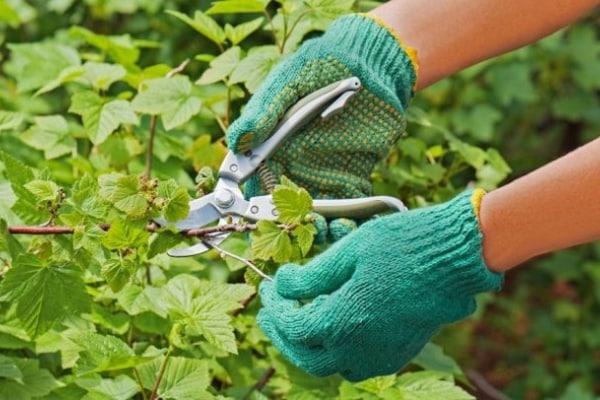
The upper part of the shrub also forms a large number of fruit buds, but they are weaker, and the berries are small. Therefore, the third part of the main branches is cut off, while the total height of the shrub should be 47 cm. It is impossible to combine plant transplantation with branch pruning. This creates additional stress for the culture, therefore, the indices of adaptation of immunity decrease.
Landing
First, you need to dig out the shrub from the old place. To do this, a ditch 32 cm deep is dug around the near-trunk zone at a distance of 40 cm. Then the plant should be pulled at the base. The roots that hold the shrub in the ground are trimmed with a shovel.
Council. In order not to damage the plant during work and transportation, the branches are tied with a rope.
The dug out shrub is placed on a large canvas and delivered to the intended landing site:
- First, the roots of the plant are examined. Dried, damaged branches are removed. Then the roots are placed for disinfection in a solution of potassium permanganate for 16 minutes.
- A shrub is placed in the prepared hole in the center, the root branches are distributed and covered with earth. Make sure that the root collar is 5 cm above the ground.
- When filling the pit with earth, it is important that voids do not form. They increase the risk of developing rot. In order to prevent the formation of voids, the plant is periodically shaken.
- The soil around the trunk is lightly compacted and an irrigation trench is formed. For the first watering, take two buckets of warm, settled water. Water is poured into the well slowly, waiting for complete absorption.
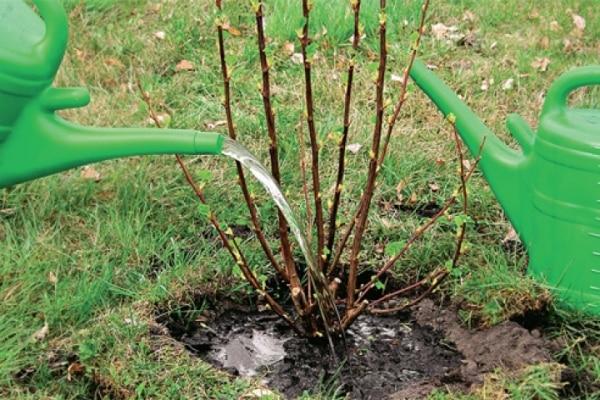
The last measure is mulching the near-stem soil with peat, humus or sod land.
What to consider when replanting young and old currants
An adult bush should be transplanted to a new site with extreme caution. You need to try to leave as much soil as possible on the roots. The bush is dug in from all sides to a depth of 42 cm. The procedure should be carried out slowly, protecting the roots from damage. A large bush is pulled out together.
Young bushes can be dug out without an earthen coma, since there is a high probability that the plant will take root without it.
Distinctive features of transplant of different types
Each variety of currant differs not only in the color of the fruit and the form of growth, but also in the requirements for soil, environmental conditions and care.
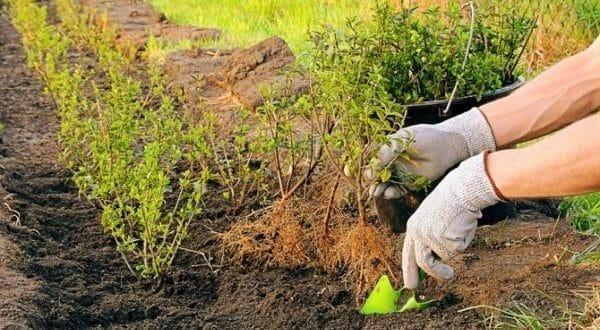
Black currant
The black currant variety is less whimsical. Almost any soil is suitable for planting it and you can choose the northern part of the site. A high yield can be harvested even under temporary shade conditions.
Red currant
Red currant makes more demands on the soil. The soil should be fertile, loose, with good aeration. A soil with a high sand content is ideal.
For red currants, you need to dig a deeper hole. This is done in order to establish a drainage layer. Red currant roots do not like excessive moisture, as the resistance to fungal diseases is low.
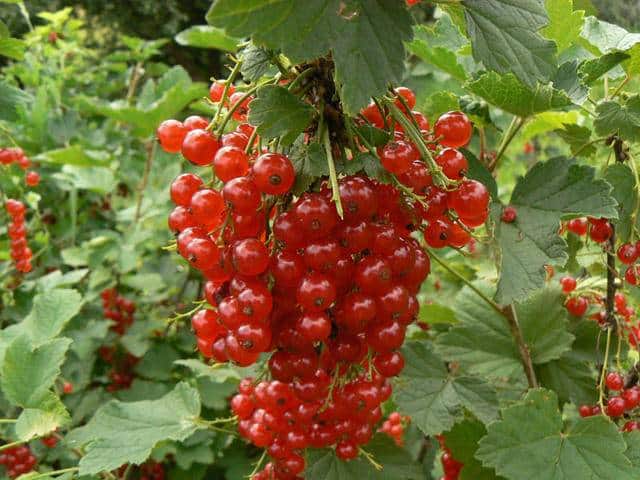
Leaving after disembarking to a new location
The first time after planting, dug currants require special attention:
- In order for water and air to freely penetrate to the roots, it is necessary to periodically loosen the soil. At the base of the shrub, loosening is carried out to a depth of 7 cm, in the remote zone - by 15 cm.
- The first 12-14 days water the plant every other day so that the soil is saturated with moisture by 58 cm.On average, three buckets should go to one root.
To prevent the bush from being damaged by frost, it is insulated for the winter. The near-trunk area is cleared of foliage and other debris. Then the soil is mulched with peat or straw and covered with pine branches. It is better to put the branches together and tie them with twine. When the snow falls, a snowdrift is thrown around the bush.
